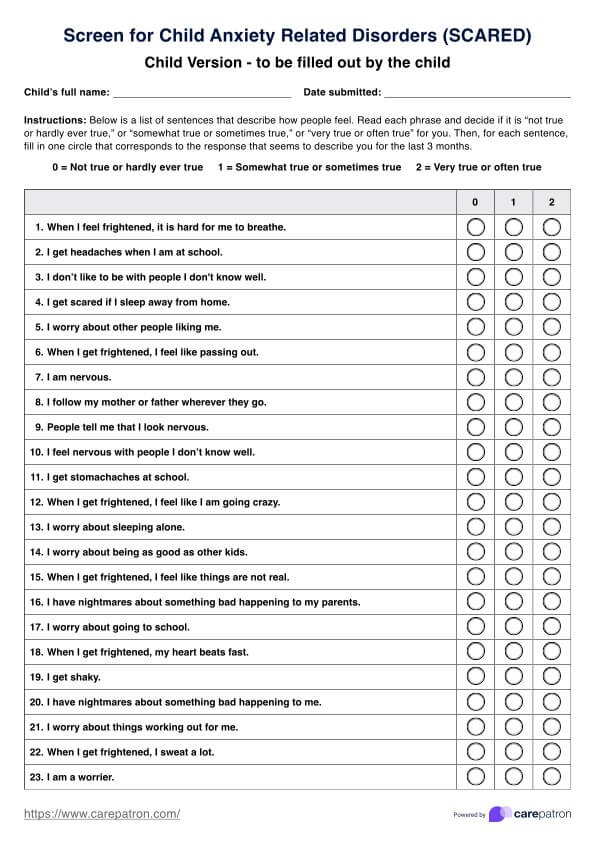SCARED is an online tool to monitor the symptoms of anxiety and social phobias. The study also examines symptoms associated with school phobia.

Screen for Child Anxiety Related Disorders (SCARED)
The SCARED questionnaire offers crucial assessments for pediatric anxiety, promoting early detection and targeted healthcare interventions.
Screen for Child Anxiety Related Disorders (SCARED) Template
Commonly asked questions
SCARED affects children ages 0-18 years. The child must do this separately from his parents. In some cases, children need to understand questions more easily. The assessment can be completed in your home and requires approximately 10 minutes of work.
Screen for Child Anxiety Related Disorders (SCARED) is crucial for early detection and assessment of anxiety disorders in children, allowing for timely intervention and support. It offers a comprehensive tool for healthcare professionals to evaluate various anxiety-related emotional disorders in both children and adolescents. Including parent and child versions enhances its effectiveness by providing a holistic perspective on the child's emotional well-being.
EHR and practice management software
Get started for free
*No credit card required
Free
$0/usd
Unlimited clients
Telehealth
1GB of storage
Client portal text
Automated billing and online payments











